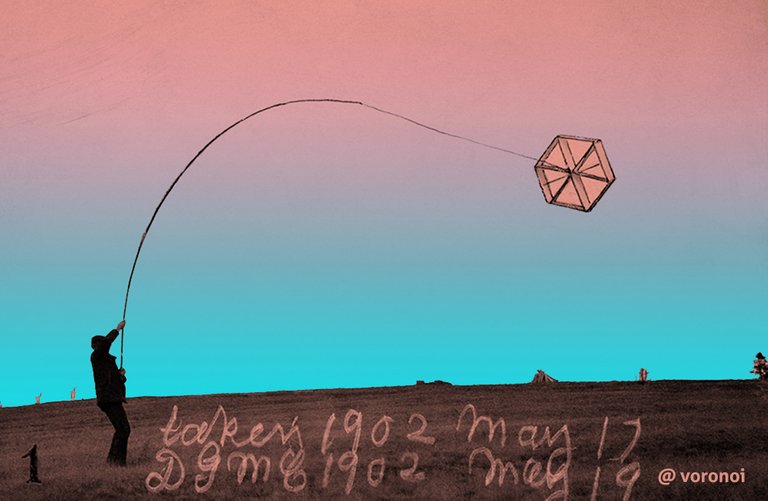
A four sided object whose sides and base are all triangles - the “tetrahedron” was a geometry of interest when it came to early experiments in flight and renowned inventor Alexander Graham Bell. In 1876 Bell patented the telephone, surely the work he is most remembered for. However, he also invested the better part of two decades towards exploring the possibilities of flying machines...
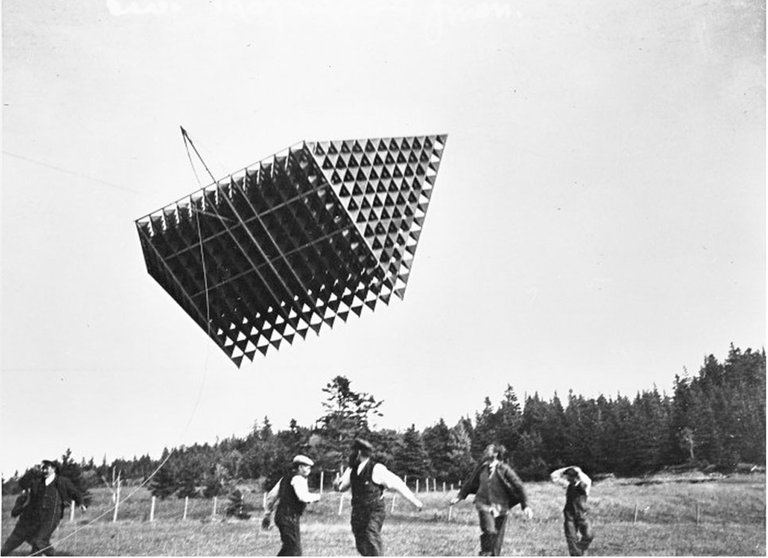
Alexander Graham Bell and his Tetrahedral Kite, named “Frost King” (1904)
On a remote testing site in Nova Scotia - Bell’s lab explored the efficiencies and inefficiencies of airborne fractal geometries. Over the course of 15+ years Bell’s team created hundreds of large-scale geometric studies and exotic kite designs.
“Frost King” was a tetrahedral kite prototype composed of 1,300 cells made out of silk. Bell’s “King” reportedly lifted one of his assistants nearly thirty feet up in the air. (Possibly why everyone is running away, above.) The scientist, inventor, engineer, and geometry-lover continued to manipulate his box-kite designs with the hope of one day carrying a man inside.
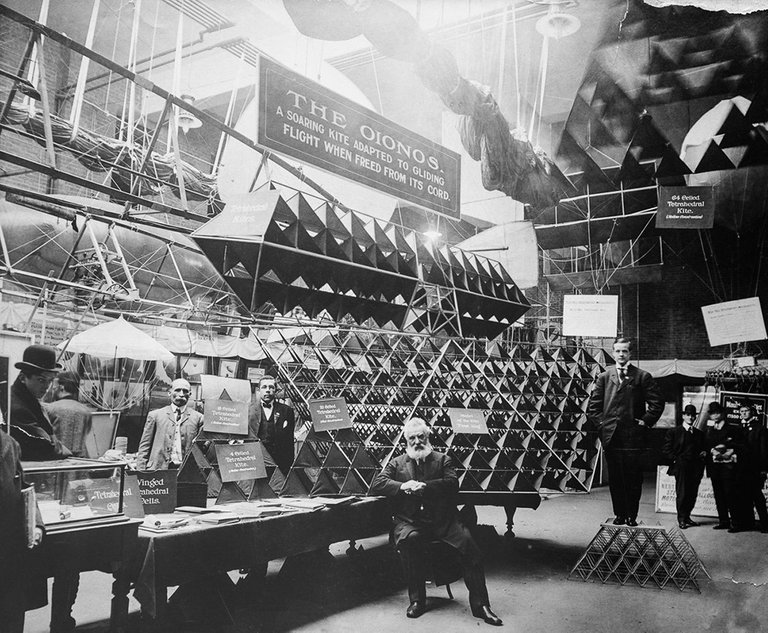
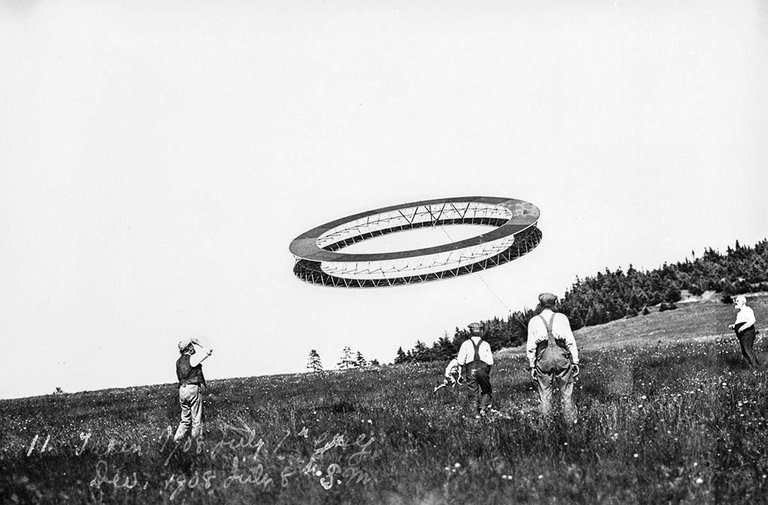
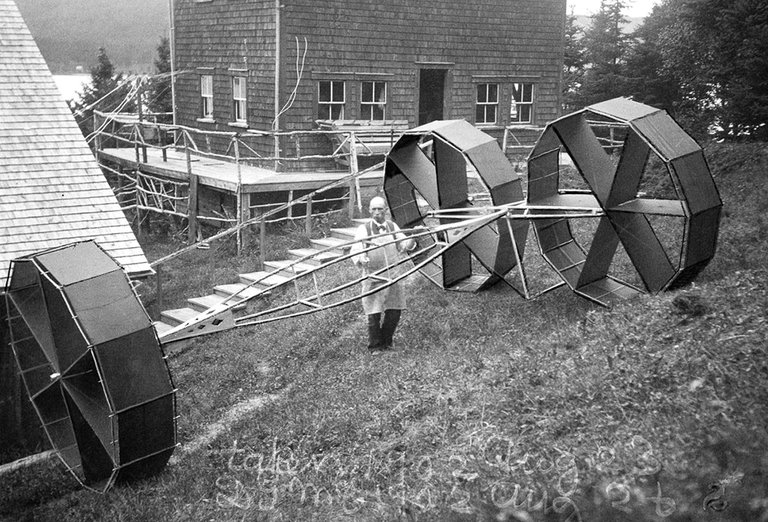
“The tetrahedral principle enables us to construct out of light materials solid frameworks of almost any desired form, and the resulting structures are admirably adapted for the support of aero-surfaces of any desired kind, size, or shape.” - AGB in 1903
In 1907, Bell designed a massive version of the King that he called “Cygnet.” This flying-machine prototype contained 3,393 tetrahedral cells, which lifted a passenger 168 feet above the ground before crashing. (Cygnet visible below.) While the passenger survived, U.S. Army Lt. Thomas Selfridge later died in 1908 within a Wright Brothers test flight. Selfridge became the first person to die as a result of “airplane.”
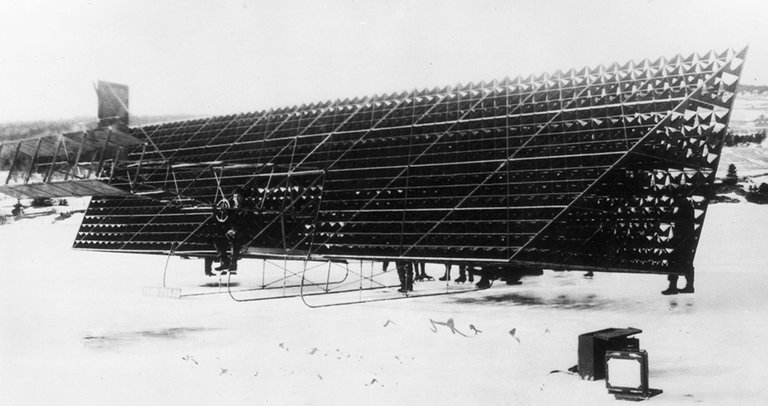
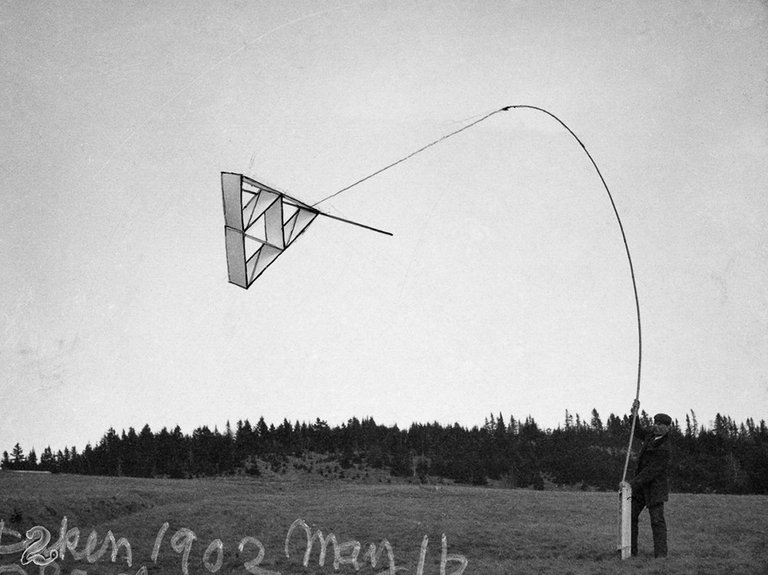
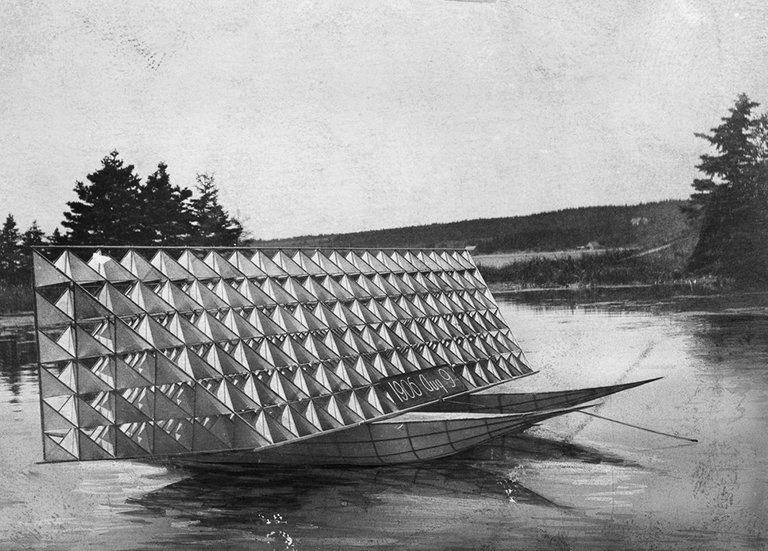
With trial and error comes love and geometry. Below, Bell kisses his wife Mabel through a prototype tetrahedron.
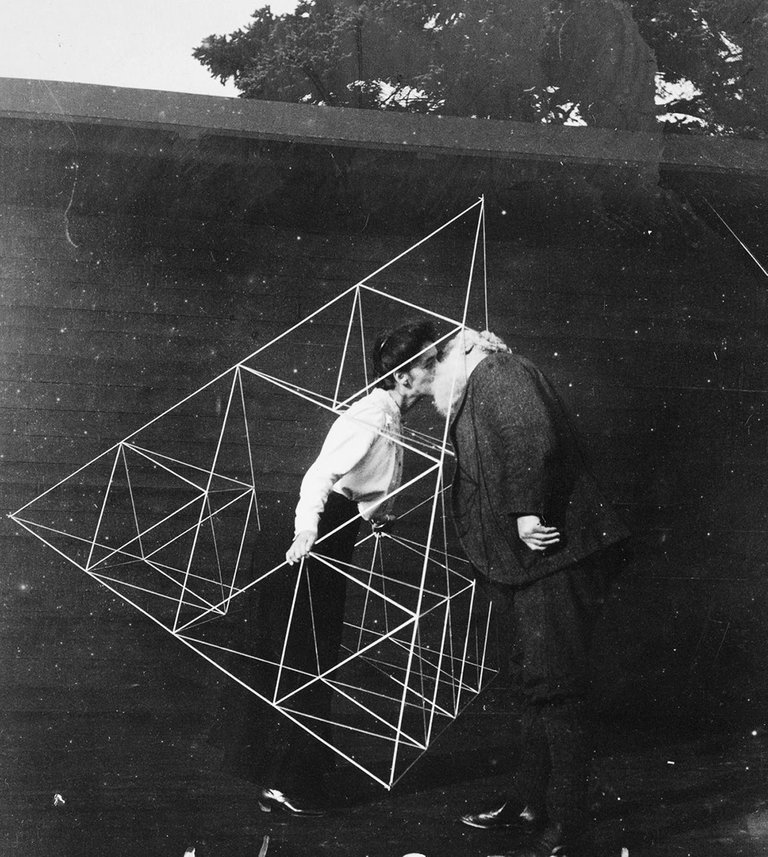
Thumbnail image : a @voronoi collage based on a kite prototype photograph taken May 17, 1902. All image sources are through National Geographic Creative / Corbis.
For more musings on science + art + architecture...
Very interesting history... As an inventor myself, I'm now wondering how the efficiency of such a wing compares with current/conventional airfoils... Hmmm... Tetra wings would certainly be strong and relatively easy to build, but they look like they would have a lot of "drag."
Interesting! Yeah I'd bet there would be a considerable drag problem. I was wondering also about the location for testing these (up in Novia Scotia.) Do you think that the naturally cold air had any positive influence on the airflow of these designs?
Cold air == improved density-altitude, and so it seems likely that it would. :)
One really cool characteristic of a tetrahedral wing flying machine would be that it would be pretty easy to make it collapsible/foldable... How about a man-carrying wing that you could fold down to backpack size? :) :) :)
Guess that's why they're all wearing jackets! A backpack that could unfold into a flying device like this one would be incredible! Maybe one day... :)
:) :) :) :) :) :) :) I want one! ;)
Fascinating stuff. Imagine working in one of those workshops, all those amazing shapes, dreams and experimentation.
I feel that way as an art hobbyist. Would be awesome to be in a large workshop surrounded by a variety of amazing shapes and colours, not to mention people with fascinating ideas to create and experiment on.
Hey you know if steemit matures to the point of having a live-video feed, we could make our own workshop right here!
That would be quite interesting!
Absolutely. That interior warehouse shot is incredible. It reminds me of some Buckminster Fuller studio scenes... like a playground for geometries. Those kinds of studios are much harder to find these days!
I wonder how well that design would work as a traction kite for a boat?
They actually used boats to lift a majority of these designs off the ground... with a boat pulling it - "Cygnet" the big fella, got 168 feet up in the air! (Then crashed)
I meant the other way around. Launch a kite then have itpull the boat thru the water instead of a sail.
Fantastic. That's super neat. Tetrahedral kites might actually be more accommodating for boats... they have more surface area opportunities to catch air for lift. A flat fabric kite could be more difficult to launch. Thanks for sharing!
You're welcome.
Could this geometry be used to facilitate wind based energy harvesting via windmills with tetrahedron geometry catching the air?
Interesting, it wouldn't be able to work as a traditional windmill... BUT - You could engineer it to capture pressure / vibration via wind passing through similar to an ocean buoy powered by wave action... It would be amazing to see a "wind" farm made of geometries like these. Thanks for your comment @vgratefulv !
Great content, keep it up.